[The light curve of an X-ray burster. X-ray bursts happen when explosive helium burning occur on the surface of a neutron star accreting material from its companion. (Accreted hydrogen is coverted into helium upon arrival on the neutron star surface.) Note that novae in optical bands discussed earlier are similar to X-ray bursters but with explosive hydrogen burning on the surface of a white dwarf, instead of a neutron star.]
[X-ray pulses from Centaurus X-3 detected by UHURU satellite. The pulse period is 4.84 sec. Binary motion signature has been found with orbital period 1.7 days. X-ray pulsars are neutron stars with stronger magnetic fields accreting mattter from companions. Because of the strong magnetic fields, accreted matter is channeled to the two magnetic poles of neutron stars. Those polar regions are heated and emit strong X-rays.]
[X-ray binaries. According to the mass of the companion star, X-ray binaries are divided into Low Mass X-ray Binaries (LMXBs) and High Mass X-ray Binaries (HMXBs). Most X-ray bursters are LMXBs, and most X-ray pulsars are HMXBs. X-ray binaries may have neutron stars or black holes as the primary star. Black-hole X-ary binaries do not behave as X-ray bursters or X-ray pulsars.]
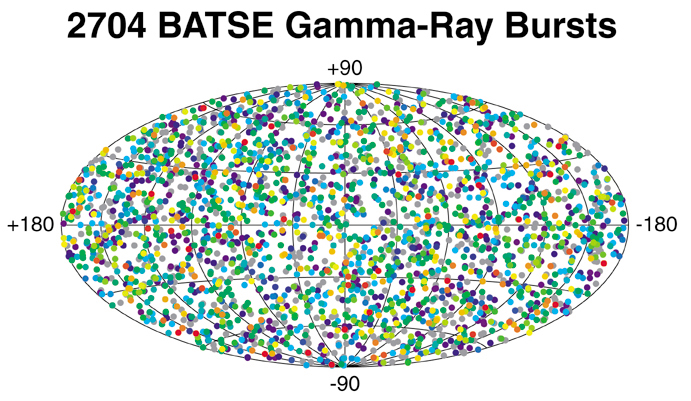
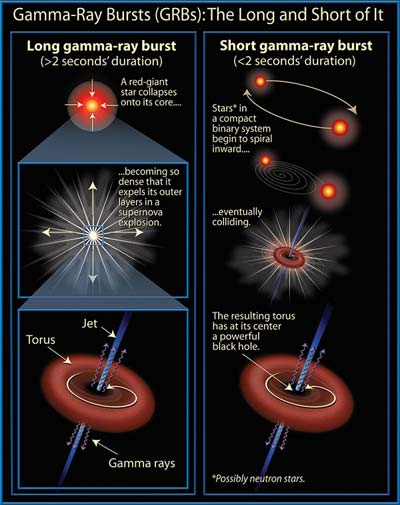
More about GRBs can be found at the SWIFT web site.
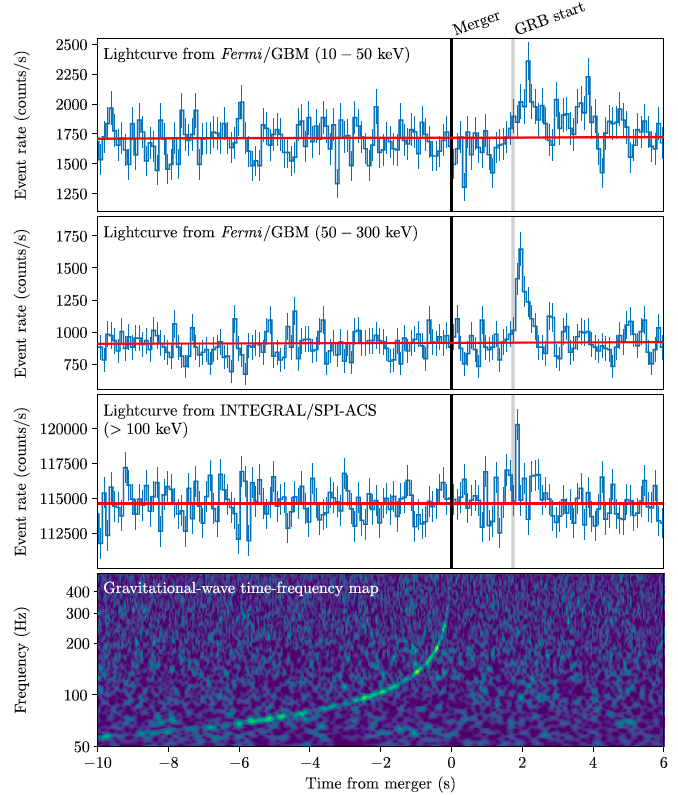
[GW 170817 and GRB 170817A. A gravitational wave event was found to be associated with a short GRB! (Abbott et al. ApJL 848, L13, (2017))]
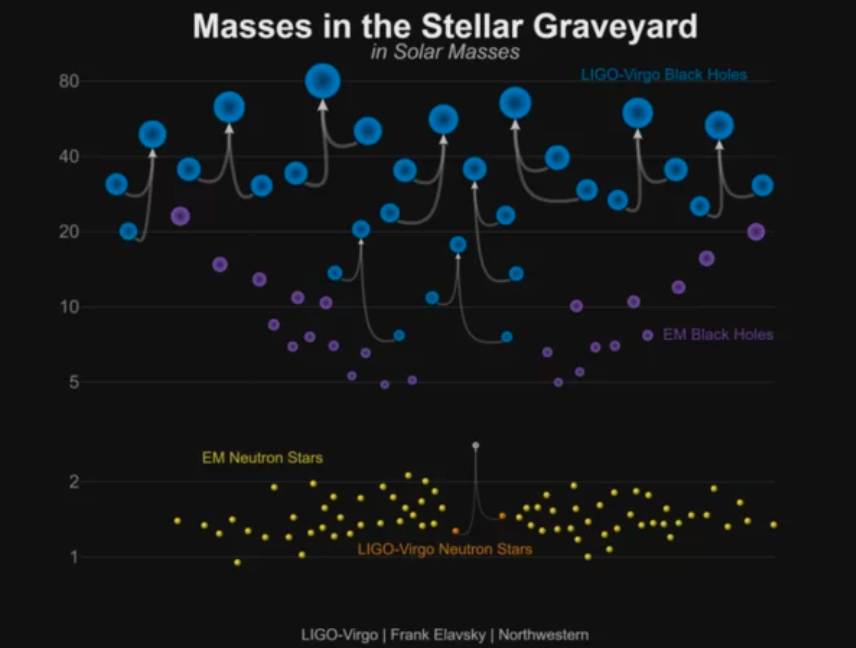
[Inferred merger masses. This figure is updated to Dec. 2018. Check LIGO at Caltech.]
Quark stars?
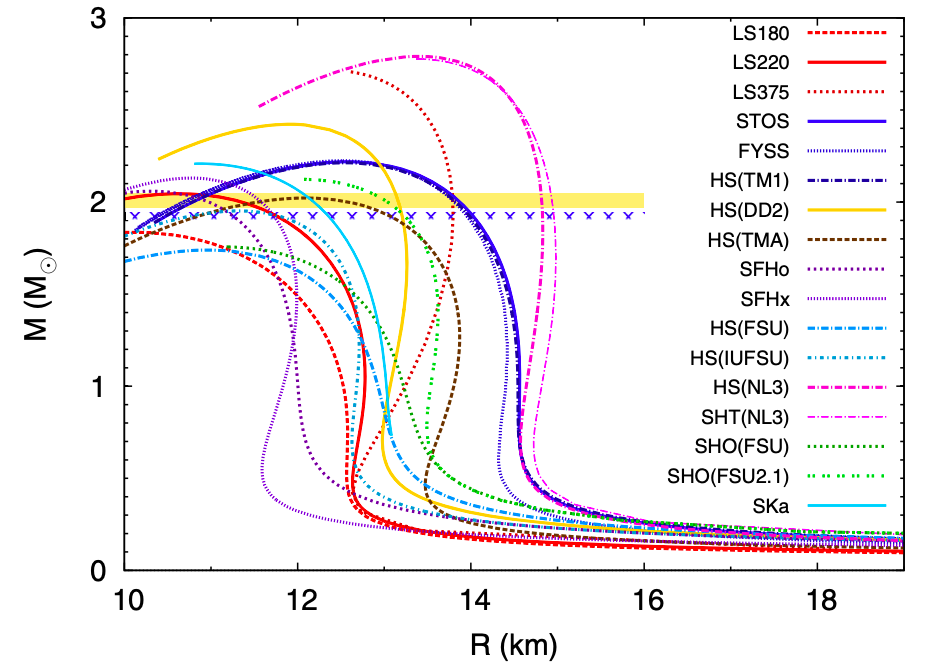
[Mass-Radius relation of neutron stars with different EoS. The yellow and hatched blue horizontal bars are the mass of neutron stars in PSR J0348+0432 and PSR J1614-2230, respectively. (Oertel et al. Reviews of Modern Physics 89, 015007 (2017))]
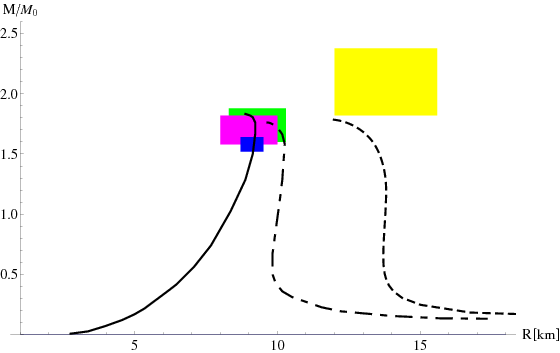
[An example of quark star equation of state. The solid line is a certain quark star, the dot-dashed line is a hybrid quark star, and the dashed line is a neutron star. The color boxes are 1-σ confidence region for EXO 0748-676 (yellow), 4U 1608-248 (green), EXO 1745-248 (magenta), and 4U 1820-30 (blue). This figure is taken from Drago & Lavagno, 2010, arXiv:1004.0325.]